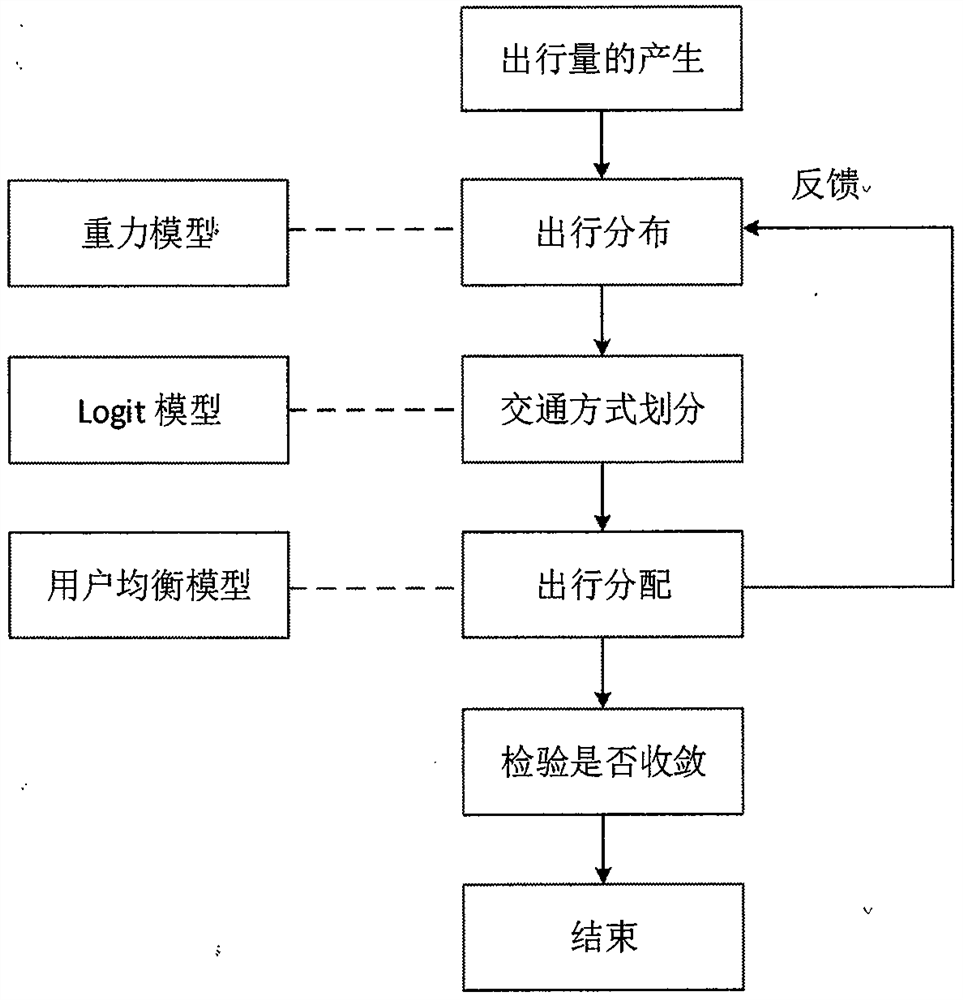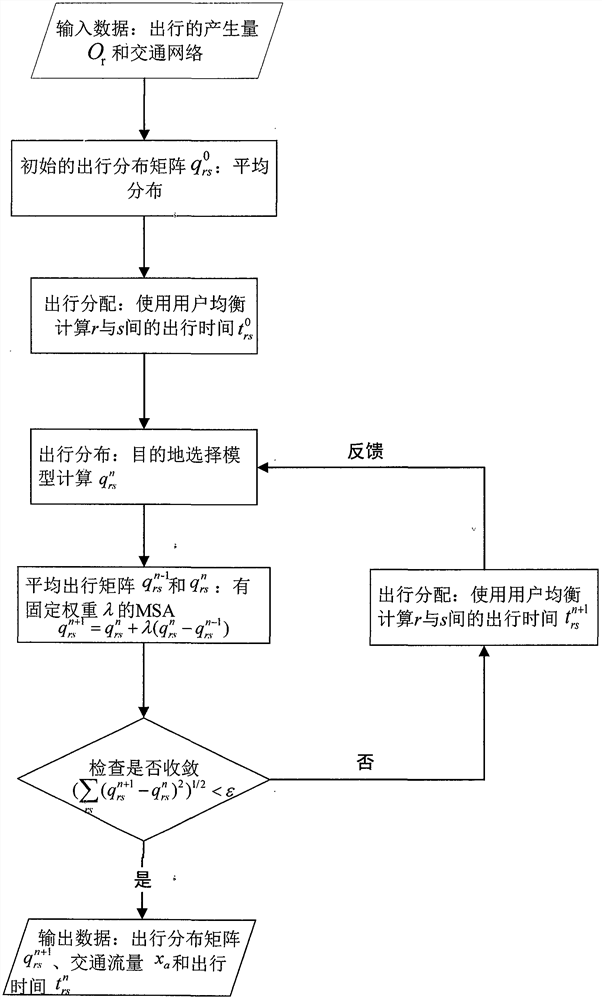Combination model of traffic distribution and traffic flow assignment considering traveler's destination preference
A technique for combining models and travel distribution matrices, applied in the field of traffic engineering
- Summary
- Abstract
- Description
- Claims
- Application Information
AI Technical Summary
Problems solved by technology
Method used
Image
Examples
Embodiment Construction
[0077] Below in conjunction with accompanying drawing of description, the present invention will be further described:
[0078] Step 1: Build a travel distribution model considering traveler preferences
[0079] The polynomial logit model is the simplest and most popular discrete choice model for destination selection. It is based on random utility theory, assuming that a representative traveler living in region r will obtain random utility U from alternative destinations s rs . The utility consists of:
[0080] u rs =V rs +ε rs
[0081] Among them, V rs Indicates the utility that can be observed, ε rs Indicates utility that cannot be observed. The traveler is faced with some attribute of the candidate, which is defined as Therefore, V rs Can be expressed as:
[0082] V rs = β s +β 1 x rs 1+β 2 x rs 2+…+β k x rsk
[0083] Among them, β s is a candidate-specific constant that represents the average utility of all factors not included in the model, also kn...
PUM
 Login to View More
Login to View More Abstract
Description
Claims
Application Information
 Login to View More
Login to View More - R&D
- Intellectual Property
- Life Sciences
- Materials
- Tech Scout
- Unparalleled Data Quality
- Higher Quality Content
- 60% Fewer Hallucinations
Browse by: Latest US Patents, China's latest patents, Technical Efficacy Thesaurus, Application Domain, Technology Topic, Popular Technical Reports.
© 2025 PatSnap. All rights reserved.Legal|Privacy policy|Modern Slavery Act Transparency Statement|Sitemap|About US| Contact US: help@patsnap.com



